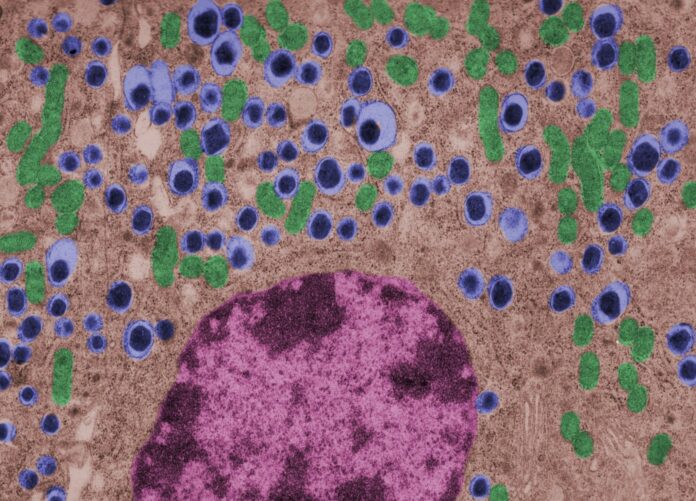This content material initially appeared on diaTribe. Republished with permission.
By Anna Brooks
On the seek for a sort 1 diabetes treatment, scientists are experimenting with find out how to engineer beta cells to outlive immune system assaults. On the American Diabetes Affiliation’s 83rd Scientific Periods in San Diego, specialists shared early analysis findings and the place we’re on the trail to stopping sort 1 diabetes.
Researchers, advocates, and sufferers have lengthy looked for a treatment for sort 1 diabetes, a persistent autoimmune situation by which the immune system destroys insulin-producing beta cells of the pancreas.
Proper now, the closest factor to a treatment is a pancreas transplant or the transplantation of beta cells from deceased donors. Each choices include main caveats, such because the restricted variety of pancreatic organ donors, how sophisticated it’s to guard transplanted beta cells, and the necessity for long-term immunosuppressive remedy.
“To achieve the true management for glucose that sufferers want, we have to discover a treatment,” mentioned Judith Agudo, principal investigator on the Dana-Farber Most cancers Institute. “And a real treatment comes from getting again what’s lacking – the lacking beta cells.”
Agudo was certainly one of a handful of specialists who spoke on the ADA’s Scientific Periods and shared what they’re engaged on to crack the beta cell code and different pathways to cease sort 1 diabetes.
Engineering super-strong beta cells
In sort 1 diabetes, the immune system identifies beta cells as international. This triggers T-cells (which usually assist defend the physique from an infection) to assault. One technique for coping with that is taking remedy that lowers the physique’s immune response.
The problem right here is that suppressing the immune system makes the physique extra susceptible to an infection and most cancers. Folks with diabetes are already at the next threat for creating infections and most cancers, so long-term immunosuppression comes with extra dangers.
Agudo has been learning mannequin T-cells she created known as Jedi T-cells, which allow her to review the immune system’s assault on beta cells. By way of her analysis, she observed that although many cells had been focused by Jedi T-cells, some had been in a position to survive.
“We be taught from nature, from cells which are in a position to escape from an immune assault,” she mentioned. “It tells us it is a wholesome, insulin-producing beta cell that’s dealing with a robust T-cell assault.”
Whereas the mechanism behind why some beta cells can resist a T-cell onslaught is unknown, Agudo mentioned uncovering this might permit scientists to engineer tremendous sturdy beta cells that may be transplanted into sufferers and survive with out the necessity for medication that compromise the immune system.
Cloaking beta cells
One other subject is defending cells which were transplanted. T-cells will determine and assault the transplanted cells simply because it did with the unique cells – so how can we maintain the brand new cells protected?
Agudo defined that one choice is hiding them. One technique is known as encapsulation, which supplies transplanted cells with a bodily barrier that stops immune cells from reaching them. The draw back right here is the barrier could make the alternate of vitamins and oxygen more durable, in addition to forestall the insulin the cells create from stepping into the blood.
Different analysis suggests an “immune cloaking” technique the place islets are engineered to cover from or be unrecognized by immune cells that will usually goal them as international objects.
“They turn out to be invisible, cover in plain sight, and now they’ll survive,” Agudo mentioned.
Utilizing intestine micro organism as a vaccine
Proof from research means that the intestine microbiome is a key element within the improvement of sort 1 diabetes.
Aleksandar Kostic, assistant professor of microbiology at Harvard Medical College and investigator on the Joslin Diabetes Heart, mentioned his analysis round utilizing microbial antigens (invading microbes or international substances) to develop a vaccine for sort 1 diabetes.
Current analysis helps the thought of vaccines in opposition to viruses that stay within the digestive tract like Coxsackievirus B, which is regarded as a think about creating sort 1 diabetes. Latest animal research have additionally been investigating a Salmonella-based vaccine to forestall and possibly even reverse diabetes. Kostic’s analysis has targeted on vaccinating in opposition to one other microbial antigen known as poly-N-acetyl glucosamine, which can result in safety in opposition to the situation.
“We’ve began creating this as remedy for sort 1 diabetes,” Kostic mentioned. “We’re discovering vaccination with this antigen can halt diabetes in mice.”
Researchers like Kostic and Agudo are a part of the ADA’s Pathway to Cease Diabetes program, which supplies scientists with grants and assets to speed up and rework diabetes analysis.
“It might sound like science fiction however it’s not, it’s taking place,” Agudo mentioned. “We’re on the very starting, but it surely’s actually an thrilling second.”

